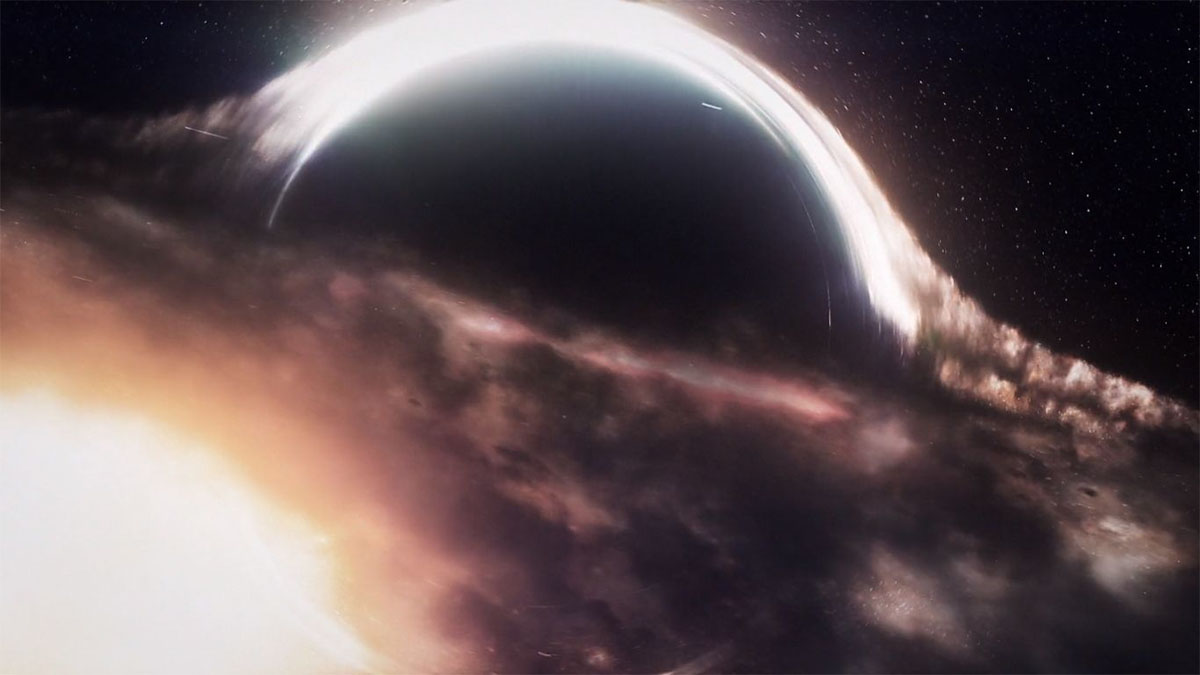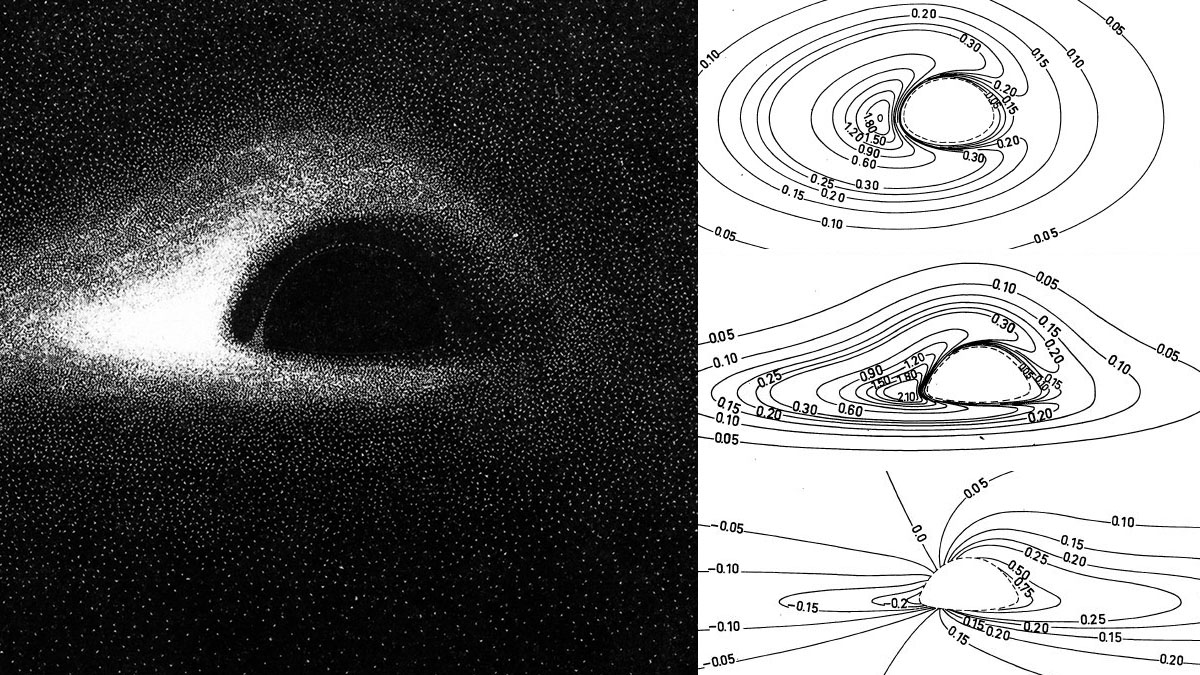what interstellar’s black hole can teach us about science in entertainment

Interstellar, to be perfectly forthright, seemed like Inception with spaceships and black holes, the equivalent of a new hit single with the same chord progression as the last one. But one of the movie’s major highlights was its depiction of a supermassive black hole bending light from every angle into bright smears and circles, a depiction based not on an artist’s imagination but very real science with no less of an authority than Kip Thorne supervising the finished product.
It was a striking effect that quickly caught on for new illustrations of these bizarre stellar objects thanks to a symbiosis of the media’s coverage about the science of black holes and the movie’s marketing. Even space agencies are adjusting their visualizations to reflect the now expected bending of light and space in accretion disks they add to make the objects stand out in the images they publish with their press releases. But let’s not give Nolan all the credit here. After all, he and Thorne were not the first people to wonder what a black hole would actually look like.
This depiction of black holes is actually more than four decades old. Its first iteration was in 1979, when French astrophysicist Jean-Pierre Luminet crunched the numbers on how a black hole’s frame dragging, or the disruptions of the fabric of space time created by a rapidly rotating object, and extreme gravitational tides, would bend light around the event horizon. The end result of this exercise was a rendering looks like an askew, low resolution version of what we’d eventually see in Interstellar, although that shouldn’t taken as an endorsement of the movie’s overall scientific accuracy. In fact, in an email exchange, Luminet said he talked to Kip Thorne while the movie was being made and after enough inquiries from writers and journalists felt the need for a six part blog post on all the scientific issues he saw with the final product.

And if we really wanted to, we could trace the history of black hole renderings even farther, since Luminet drew on the work of James Bardeen and his grad student C.T. Cunningham, and built on simulations created by Leigh Palmer, Maurice Pryce, and William Unruh. In a way, what we saw on the screen was a culmination of 42 years of math and hard work, work which continues today as scientists try to take an indirect picture of Sagittarius A*, the supermassive black hole at the heart of our galaxy.
All of this, of course, is not to say that Nolan or Thorne stole someone’s thunder. They used studies and papers meant to be shared and built on to give us a more complete picture of our universe, which is something other filmmakers may want to emulate. Thanks to the visual effects crew going above and beyond to deliver an accurate rendering of a black hole, the general public now has a better understanding of these objects without even realizing it and asked a lot of questions about how they really work and how we know anything about them.
While science fiction and comic book movies are often use advice from scientists badly or serve as a flimsy excuse for pop sci writers and communicators to talk about science with dubious results, movies and TV shows that use science to drive the plot or dictate the look and feel of their universes can strike the perfect balance between entertainment and education. Obviously, we need to allow for the suspension of disbelief and it would be ridiculous to demand that every movie must be scientifically accurate. But we should absolutely encourage creatives to see science not as a barrier to their vision but an ally in shaping their worlds.
Astrobiology can shape more diverse, realistic, and exciting aliens. Astronomy and astrophysics can guide more realistic alien solar systems and introduce new plot points thanks to the variety and eccentricity of worlds that are unlike anything we imagined until we started detecting them. Nature is more creative than we can ever be because our imaginations are limited by our ideas, dreams and experiences. Meanwhile, the cosmos has no restrictions beyond a few basic laws dictating how matter comes together and moves. And this is why filmmakers and showrunners should lean more on science advisers, not just to sell a concept or make it look more realistic, but to define the fundamental building blocks of their universes.





